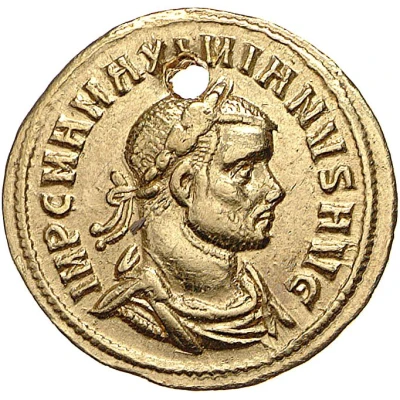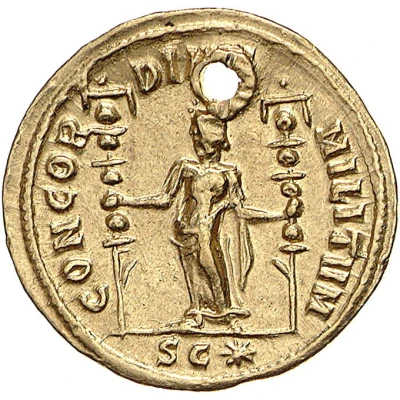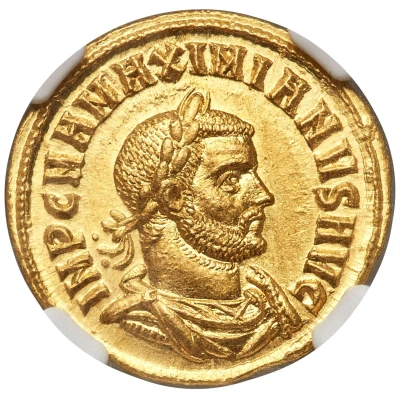


© Münzkabinett - Staatliche Museen zu Berlin (CC BY-SA 4.0)
Aureus - Maximianus CONCORDIAE MILITVM; Concordia
| Gold | 5.3 g | 21 mm |
| Issuer | Rome › Roman Empire (27 BC - 395 AD) |
|---|---|
| Emperor | Diocletian (Gaius Aurelius Valerius Diocletianus) (284-305) |
| Type | Standard circulation coin |
| Years | 284-294 |
| Value | Aureus (25⁄2) |
| Currency | Antoninianus, Reform of Caracalla (AD 215 – 301) |
| Composition | Gold |
| Weight | 5.3 g |
| Diameter | 21 mm |
| Shape | Round (irregular) |
| Technique | Hammered |
| Demonetized | Yes |
| Updated | 2024-10-05 |
| Numista | N#306649 |
|---|---|
| Rarity index | 100% |
Reverse
Concordia, draped, standing left, holding two ensigns.
Script: Latin
Lettering:
CONCORDIAE MILITVM
SC*
Unabridged legend: Concordiae Militum.
Translation: For harmony with the soldiers.
Comment
Mass varies: 5.24–5.4 g;Source:
Online Coins of the Roman Empire (OCRE)
Interesting fact
One interesting fact about the Aureus - Maximianus (CONCORDIAE MILITVM; Concordia) coin is that it features the image of the Roman goddess Concordia on the reverse side, which symbolizes harmony and unity among the Roman military. This coin was issued during the reign of Emperor Maximianus, who ruled the Roman Empire from 284 to 294 AD, and was part of a series of coins that aimed to promote the ideals of military unity and strength. The coin's design and message were meant to inspire loyalty and unity among the Roman soldiers and citizens, and to emphasize the importance of concordance in maintaining the empire's power and prosperity.



